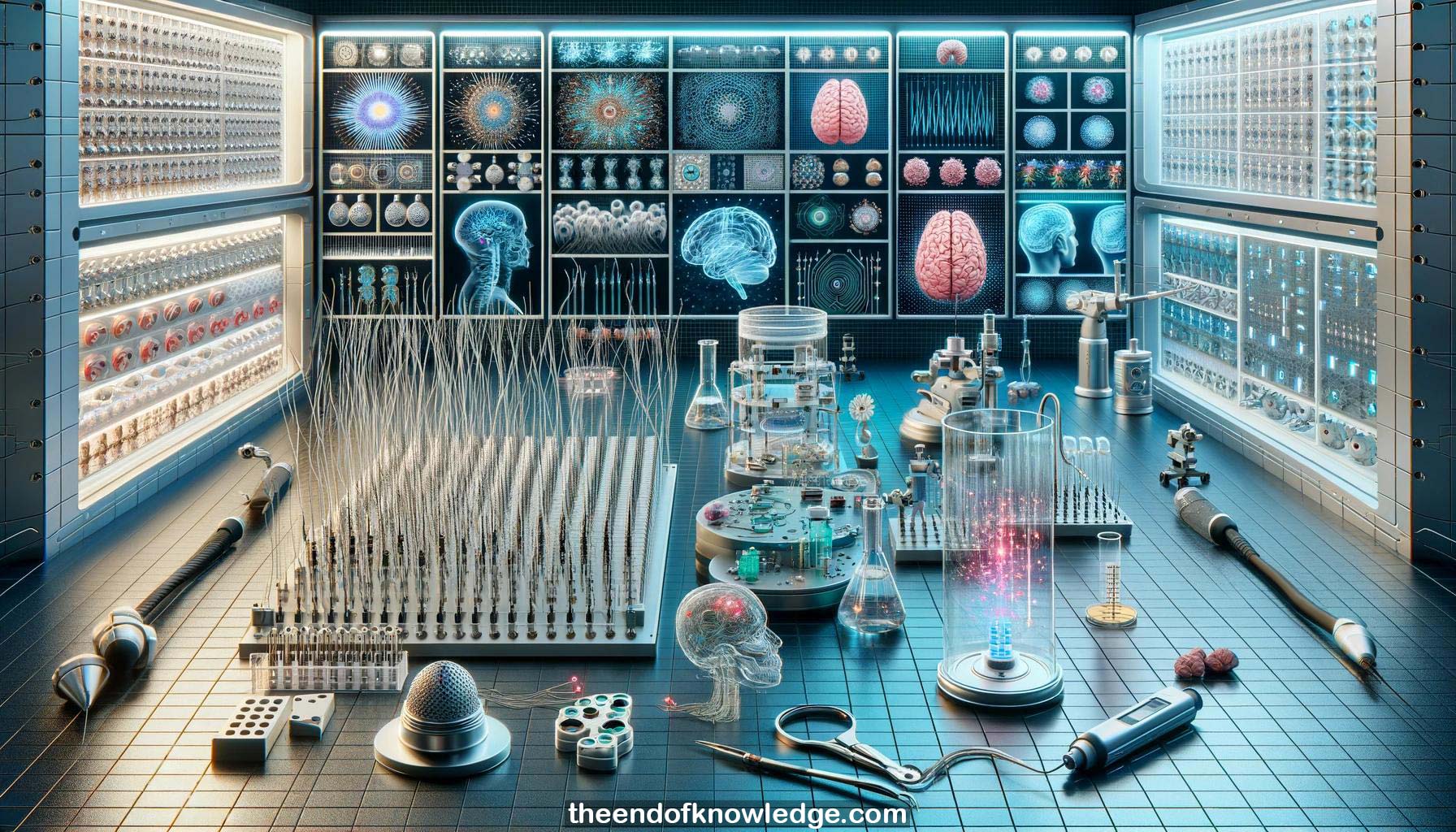 >
>
Concept Graph & Resume using Claude 3 Opus | Chat GPT4 | Llama 3:
Resume:
1.- Microelectrocorticographic (micro-ECoG) arrays can record neural spikes from the cortical surface, with potential for brain-machine interfaces.
2.- Invasive brain-machine interfaces like micro-ECoG offer higher spatial and temporal resolution than non-invasive options, but with surgical risks.
3.- Micro-ECoG employs electrodes tens to hundreds of microns in size, allowing recording from small neuron populations.
4.- Detecting neural spikes or action potentials is crucial as each neuron has unique firing characteristics encoding rich information.
5.- Intracortical microelectrode arrays can record single neuron activity but risk tissue damage; micro-ECoG is less invasive.
6.- Simulation studies suggest micro-ECoG can record spikes from sparse layer 1 neurons closest to the cortical surface.
7.- The cortex has 6 layers; intracortical arrays typically record from deeper layers while micro-ECoG targets superficial layer 1.
8.- Cortical layers are vertically arranged into functional columns, with layer 1 neuron activity correlating with deeper layers.
9.- Layer 1 neurons play a role in integrating information across cortical areas through long-range connections.
10.- Several studies have classified the molecular, morphological and electrophysiological properties of layer 1 neuron subtypes.
11.- Layer 1 neurons are coupled to and mirror response properties of deeper layer neurons traditionally targeted by intracortical arrays.
12.- Layer 1 is extensively connected to various cortical and subcortical regions, serving as an integration hub.
13.- Multiple studies demonstrate micro-ECoG can record putative layer 1 neuron spikes in animals.
14.- The authors chronically implanted 32-channel micro-ECoG arrays in rat motor cortex and recorded during an open field task.
15.- Decoded positions from the layer 1 spike activity closely matched actual positions, indicating meaningful spatial information.
16.- Individual layer 1 neurons showed spatially selective firing, together encoding enough information to accurately decode position.
17.- Limitations of micro-ECoG include sensitivity to array positioning and inflammatory reactions; further optimization is needed.
18.- Future work should further characterize layer 1 neuron response properties relevant for brain-machine interface applications.
19.- Conformable thin-film micro-ECoG arrays improve adherence to the brain surface through flexibility and surface tension.
20.- Beyond spikes, micro-ECoG may also detect other signals like dendritic calcium spikes and axon potentials near the surface.
21.- The spatial resolution and large-scale coverage potential of micro-ECoG enables studying brain circuits in new ways.
22.- Spike recording was demonstrated in various species in sensory and motor areas, both anesthetized and behaving.
23.- Layer 1 neurons likely convey information from distant areas in addition to mirroring local activity.
24.- Micro-ECoG is comparably invasive to standard ECoG but may allow smaller craniotomies; costs are currently high.
25.- With better adhesion, micro-ECoG could provide stable long-term recordings; current signal quality tends to degrade after weeks.
26.- Common micro-ECoG materials include gold electrodes with polymers like PEDOT and Parylene; nanomaterials are an emerging option.
27.- Potential human applications are similar to intracortical arrays, including robotic prosthesis and cursor control.
28.- Key artifacts include movement-related noise, which may be reduced with wireless setups, and physiological signals.
29.- Several global research groups are working on micro-ECoG; the speaker is beginning work on neuroprosthetic applications.
30.- Micro-ECoG could enable new research paradigms by providing large-scale access to spiking activity for studying brain function.
Knowledge Vault built byDavid Vivancos 2024